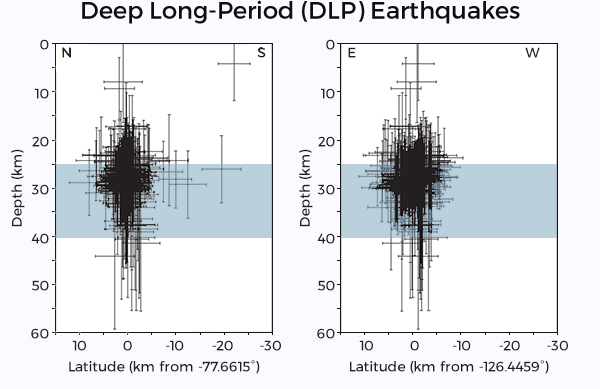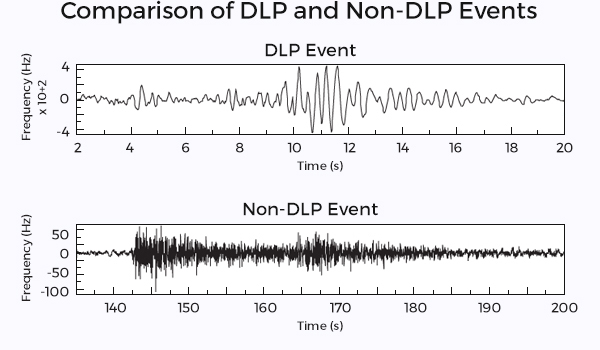Hard Data to Collect
(Jeremy Miner/POLENET)

In 2007, a team of scientists installed a network of seismometers in the West Antarctic Ice Sheet. Installing seismometers in the harsh conditions of West Antarctica was no easy task. The researchers used snowmobiles to pull seismometers hundreds of miles across the ice sheet, braving the extreme conditions to set up their equipment. The team dug through thick layers of snow and ice to bury the seismometers at the correct depth. In 2010, a group of scientists made the difficult trip to retrieve the seismometers and collect the data.
The research team originally installed the seismometers to figure out the characteristics of the rock below the ice. The data told them a different, and surprising, story.
Antarctica Earthquake Swarms

Without meaning to, the scientists had accidentally discovered an active volcano more than a kilometer beneath the ice sheet of West Antarctica.
If this volcano erupted in the near future, the lava would melt the ice surrounding the volcano. The scientific community was eager to find out how much ice would melt.
(British Antarctic Survey/BAS/BEDMAP consortium)
The researchers who discovered the volcano say it would take a massive eruption, with a thousand times more energy than an average eruption, to melt the ice all the way to the surface. It is more likely that an eruption would simply cause a large volume of ice to melt – perhaps millions of gallons. This water would flow under the ice and drain to the sea.
What scientists don’t know is how that kind of melt might affect the ice shelf. Would future volcanic eruptions make the ice shelf unstable? Climate change is likely already contributing to glaciers shrinking in Antarctica. Could eruptions make the problem worse?
The West Antarctic volcano provides an incredible opportunity to research how an eruption could affect the overall environment of Antarctica. Perhaps even more importantly, it shows that even the iciest, quietest environments can have hidden fire within.
(POLENET)




